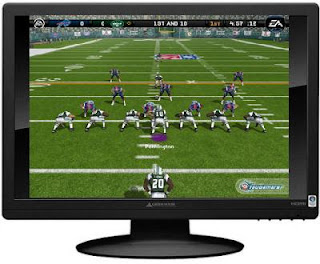Last week, I discussed steps I was taking toward carrying out my plan to implement the International Society for Technology in Education’s (ISTE) (2008) National Educational Technology Standards for Teachers (NETS•T) Standard 2, indicators c and d, which call for teachers to create authentic learning experiences that cater to individual students’ learning styles, strategies, and abilities and to employ a wide variety of formative and summative assessment strategies to inform instruction, using the best tools currently available. Using Cennamo, Ross, and Ertmer’s (2009) GAME plan, I started by setting goals which would inform actions, the results of which I would monitor in order to make adjustments throughout the process, which I would later evaluate.
In order to affect this change, I needed certain information and material resources. For example, I wanted to make sure that I had access to good ideas for using current technology to enhance instruction and assessment, and hoped to use colleagues’ experience to help me sort through the nearly infinite options available. During the past week, I have met with fellow AP teachers to exchange ideas. This in-person conversation, begun at a Saturday professional development meeting, continues now in the chat feature built in to a Google Docs document in which we are developing a collaborative plan for our AP classes. This Saturday, I plan to meet with other English teachers from around the city, who I hope to tap for ideas and invite into our online conversation. Another valuable collaborative environment has been the College Board’s Electronic Discussion Group (ELG) at AP Central (http://apcentral.collegeboard.com/apc/public/homepage/7173.html).
I was also confronted with material shortages, particularly a dearth of available computers. Fortunately, by creating flexible assignments with a multi-stage development process, I have created circumstances where students, working individually at their own pace in composing and cooperatively in revising and proofreading, naturally reach different stages of their composition process at different times. While some students are weighing their options for choosing writing topics, others are planning using graphic organizers. Those who have finished this phase have moved on to drafting (some on paper, some on PCs, and still others on their phones) while classmates who have pulled ahead are receiving peer response from classmates who may be ahead in the process or waiting for a computer to become available. After those who have had peer response have finished revising using the computers or handheld devices, they can receive grammar editing on their revisions (either on a printed copy or using Track Changes on Microsoft Word) from peers at any stage of the process, after which they will compose a second revision and become available as advisors to students in earlier stages of the process. My students know that they have to produce quality work, because these writings will be posted online for a global audience. So far, allowing students to work at their own pace has created a mutually beneficial environment, where human and technological resources are shared and available to all.
Throughout this process, my students are conducting self and peer-assessments to inform their own revisions of their work and of their personal writing methods and skills. The conversations they have about their own and peers’ work will help them to reflect on their own learning styles, abilities, and needs and how these apply to their development of writing and their development as writers. They know that their work will be evaluated by their teachers, their peers, and a potentially limitless audience of people they have never met. This seems to be generating both enthusiasm and seriousness of purpose.
Throughout this process, I have learned that potential problems can inspire creative solutions that enhance the quality of the learning experience both for teachers and students. I have also learned that teachers need not solve all problems or remove all obstacles for students. To the contrary, given the opportunity, students often learn more by solving problems on their own.
My enduring question regarding pursuit of this goal is “What else can I do?” Although this question is not entirely new, it somehow stays fresh. Every time I discover a new way of making learning and assessment experiences more authentic and relevant through contemporary technology, I become more convinced that there are rich opportunities that I have not yet discovered.
Reference
Cennamo, K., Ross, J. & Ertmer, P. (2009). Technology Integration for Meaningful Classroom Use: A Standards-Based Approach. (Laureate Education, Inc., Custom ed.). Belmont, CA: Wadsworth, Cengage Learning.
International Society for Technology in Education (ISTE). (2008). NETS for teachers 2008. Retrieved October 20, 2009 from http://www.iste.org/Content/NavigationMenu/NETS/ForTeachers/2008Standards/NETS_for_Teachers_2008.htm
Subscribe to:
Post Comments (Atom)





Dug,
ReplyDeleteYou have just summarized what education in the 21st century is going to be about. Students are learning to see problems not as obstacles but as challenges that they have the resources to solve. You ask “what else I can do?” I think you are doing a lot by recognizing that as technology enhances student learning, you as a teacher must learn and grow also. When we stop seeing the opportunities and needs for personal growth then we become ineffective teachers. I know we aren’t there yet because we are still learning through Walden. I have eight more years of teaching and I intend to keep learning along with my students. I can’t imagine all the new technology we will have to learn in the next ten years.
Nancy